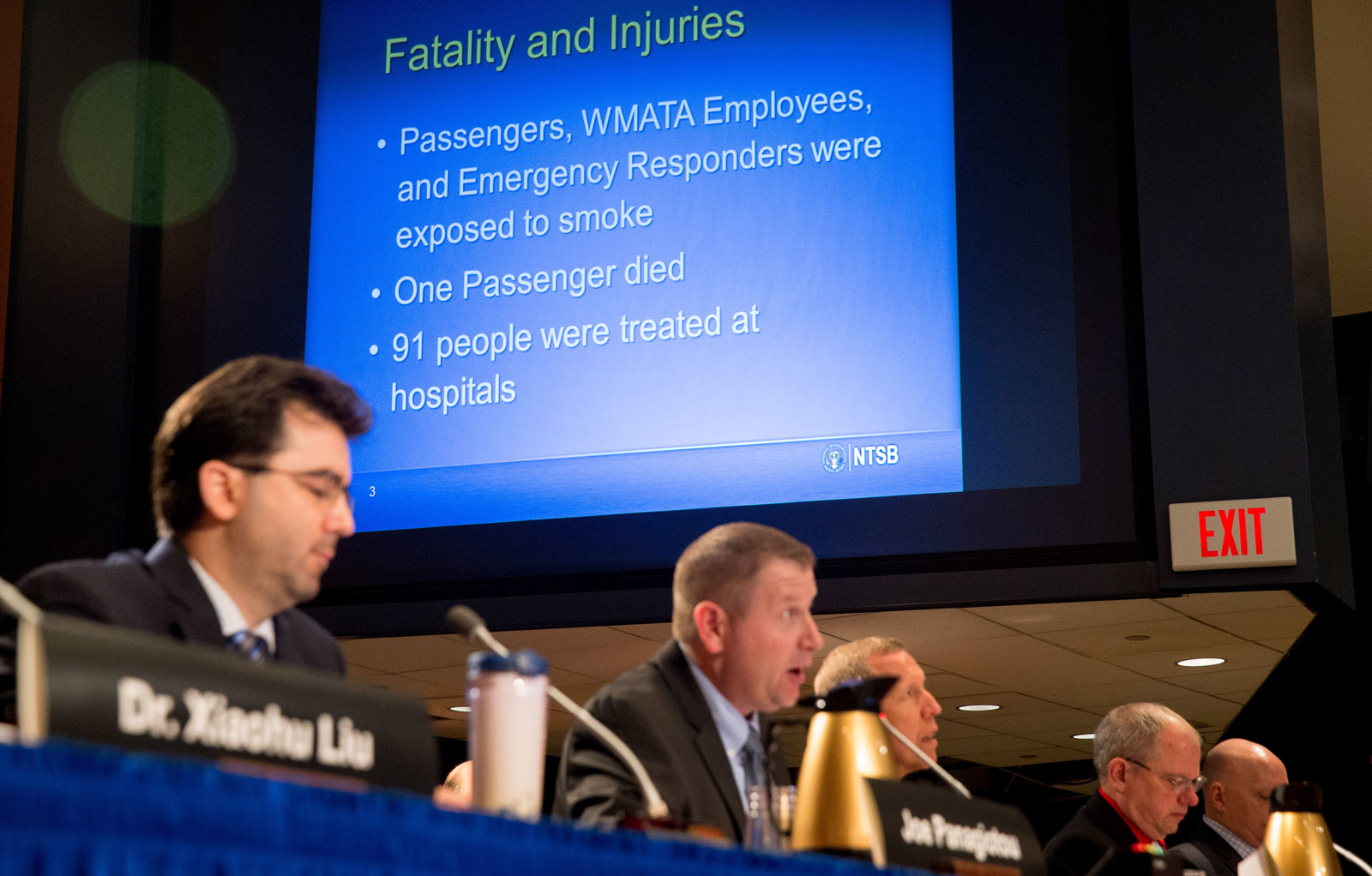WASHINGTON — There is no evidence that required tests of ventilation fans were actually completed in the year before a fire filled a Metro tunnel with deadly smoke, despite Metro records showing employees had signed off on the inspections multiple times.
National Transportation Safety Board investigators looking into the Jan. 12, 2015 electrical arcing and failed response to the smoke analyzed recordings of communications between maintenance workers and the troubled Rail Operations Control Center.
Investigator Ruben Payan said Metro found no evidence that controllers tested the remote operation of the fans near the fire site for at least a year before the smoke incident.
“In December (2014), there was a request to operate the fans remotely … operations control center responded ‘We’re busy right now, call us back later.’ But there was no follow up,” Payan said during Tuesday’s NTSB meeting held to finalize its investigation into the fatal smoke incident.
The day the smoke trapped riders and ultimately killed commuter Carol Glover, several of the fans failed to turn on as smoke filled the stranded Yellow Line train. In addition, the control center incorrectly used the fans that were working, drawing the smoke toward the train and into the nearby L’Enfant Plaza Station.
The NTSB finds that a lack of written procedures or training for the controllers staffing the operations control center was a major issue as well. And a broken smoke alarm next to the stopped train that could have indicated exactly where the smoke was coming from compounded the problems and missteps that day.
Metro still has no way to pinpoint where smoke is coming from within the transit system. And in many stretches, smoke detectors sit about 2,000 feet apart. The NTSB wants that to change.
NTSB investigators said that if Metro had activated the fans near the train to pull smoke away from the train while using the fans in the station to push fresh air into the tunnel toward the train, riders would have had a clear escape route.
Instead, both sets of fans were turned to exhaust mode.
Other concerns raised
The train’s own ventilation system had been sucking smoky air into the train for several minutes before the control center finally gave the train operator permission to turn off the railcars’ ventilation system.
The investigators said the switch only worked for a single car at the back of the train. Meanwhile, the other cars continued to fill with thick orange smoke as the operator tried in vain to take the train back to the station.
The fans in that section of the transit system don’t meet current fire codes because they were built before new standards were developed in the early 1980s. The existing ventilation shafts were designed mainly for temperature control and not to clear tunnels of smoke.
After national fire safety standards for ventilation systems were issued in 1983, Metro did several studies to look at changes to its ventilation system that might be needed. But no action was ever taken.
General Manager Paul Wiedefeld promises to review the ventilation fans again.
“We have to go back and look at what was recommended to try to improve that. And I’ve just got to look further into that to see what it would take to do that,” he said after the NTSB meeting Tuesday.
Suggestions have included adding more jet fans in the tunnels to help move any smoke.







